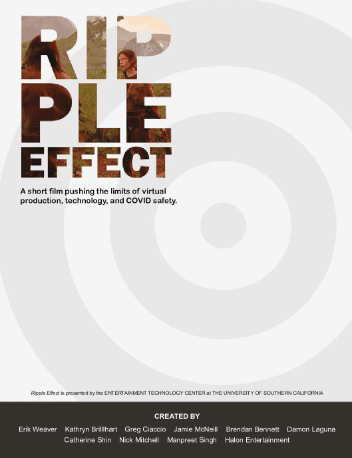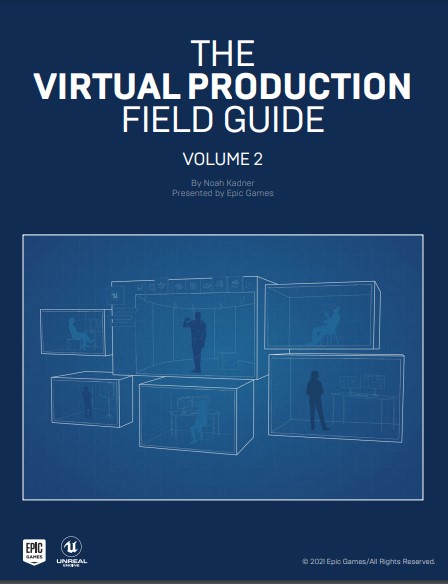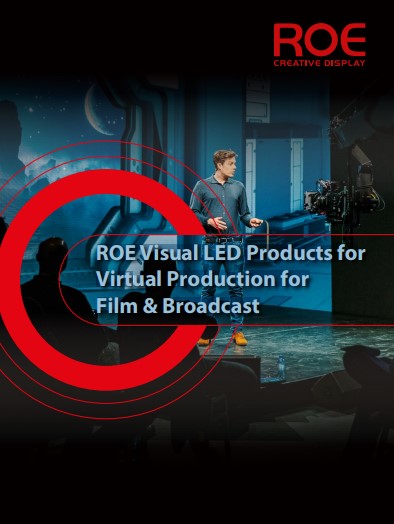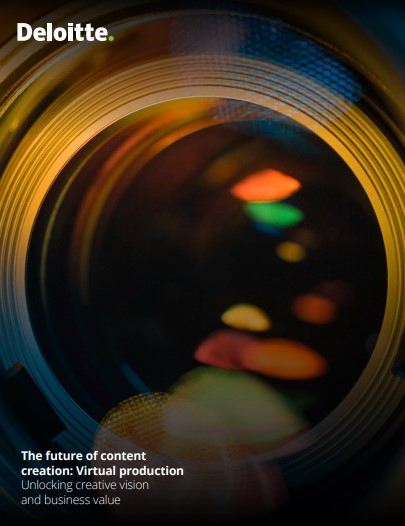Virtual Production Publications
Virtual Production Publications & Best Practices
 White Paper on USC’s RIPPLE EFFECT Virtual Production Project
White Paper on USC’s RIPPLE EFFECT Virtual Production Project
The Entertainment Technology Center (ETC) at the University of Southern California produced the Virtual Production R&D short film RIPPLE EFFECT in 2020 to test virtual and remote production. USC School of Cinematic Arts grad students and alum, with the support of a number of ETC member companies, tested critical steps to continue film productions in a new COVID socially distanced world.
 In-Camera VFX Best Practices
In-Camera VFX Best Practices
There are a number of challenges associated with building an environment that will be used for an in-camera VFX shoot. The two main concerns are:
– Building assets that appear realistic on an LED wall.
– Optimizing the environment for performance so it runs in real time.
 Managing Colour in Production (E-book)
Managing Colour in Production (E-book)
Transform your productions with industry-standard colour control. disguise Designer software is now supported by the Academy Color Encoding System (ACES), giving you the power to create photorealistic scenes without worrying about colour consistency.
With insight from Unreal Engine, ACES and Netflix, this e-book explores:
– The importance and benefits of colour calibration tools
– The top 5 things to know about ACES
– ACES for virtual production, broadcast and live experiences
– What you need to get started
 Netflix 2D LED In-Camera VFX Field Guide
Netflix 2D LED In-Camera VFX Field Guide
The term “virtual production” is an umbrella-term for techniques that allow filmmakers the ability to interact with the digital process in the same way they are used to interacting with the live-action process, as a means towards creative problem solving.
Techniques include world capture (location/set scanning and digitization), visualization (previs, virtual camera), performance capture (mocap, volumetric capture), simulcam (on-set visualization) and interactive lighting (including In-Camera VFX).
At Netflix, we see virtual production as an approach to production that connects all parts of the production process (pre through post), and requires an advanced culture of planning.
 Volume 2 of The Virtual Production Field Guide by Epic Games
Volume 2 of The Virtual Production Field Guide by Epic Games
Back in 2019, in response to growing demand for information and guidance on the emerging field of virtual production, The Virtual Production Field Guide (Volume 1) was released as an extensive primer for anyone interested in or already producing projects using virtual production techniques.
Since then, however, several things have happened to influence this exciting field. These changes prompted a second volume of the guide to supplement and extend the first. It takes a deep dive into a variety of virtual production workflows—including remote collaboration, visualization, in-camera VFX, and animation—and features a large number of case study interviews with creative professionals who share their experience in the field.
 ROE Creative Display Whitepaper
ROE Creative Display Whitepaper
A silent revolution is taking place on film and TV sets, virtual production is enabling productions to create immersive and dynamic sets and backgrounds, based on simple LED panels instead of elaborate and costly set designs.
This whitepaper contains helpful common terms with visuals.
 The New Art of Virtual Moviemaking by Autodesk
The New Art of Virtual Moviemaking by Autodesk
New digital technologies are providing filmmakers and their production teams with real-time, interactive environments and breakthrough workflows, transforming the way they plan and create movies. Using the latest 3D software, gaming and motion capture technology, they can explore, define, plan and communicate their creative ideas in new, more intuitive, visual ways helping them reduce risk, eliminate confusion and address production unknowns much earlier in the filmmaking process.
 The Future of Content Creation: Virtual Production (Deloitte)
The Future of Content Creation: Virtual Production (Deloitte)
Pressure is building in the industry as traditional and disruptive content creators compete for not only customers, but also production, visual effects, and postproduction talent and resources. As the COVID-19 global pandemic introduces further complications, virtual production capabilities may become a competitive advantage for content creators.
